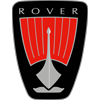 1993 Rover 600 (RH) Dimensions, Size & Specs
1993 Rover 600 (RH) Dimensions, Size & SpecsMeasurements of the 1993 Rover 600, engineered for optimal performance and comfort
| Dimensions | |
|---|---|
| Length: | 4645 mm182.9 in15.2 ft |
| Width: | 1715 mm67.5 in5.6 ft |
| Height: | 1380 mm54.3 in4.5 ft |
| Trunk Capacity: | 405-430 liter14.3-15.2 cu ft |
| Weight Specifications | |
| Curb Weight: | 1255-1350 kg2767-2976 lbs |
| Maximal permitted Weight: | 1820-1910 kg4012-4211 lbs |
| Tire Specifications | |
| Tire Sizes: |
|
The Rover 600 (RH) generation sedan was produced from 1993 to 1999, representing a refined midsize offering from the British marque during the 1990s. This model features a balanced combination of classic design and practical dimensions, making it suitable for both family and executive use. Measuring 4645 mm (183 inches) in length, the Rover 600 presents a moderately sized footprint that fits well within the midsize sedan category. Its width spans 1715 mm (67.5 inches), providing interior comfort without excessive bulk, while the height of 1380 mm (54.3 inches) contributes to a sleek, low-profile appearance.
The curb weight of the Rover 600 varies between 1255 kg to 1350 kg (2767 to 2976 lbs), depending on the trim and configuration, ensuring a stable performance dynamic and solid road presence. The vehicle’s maximum allowable weight ranges from 1820 kg to 1910 kg (4012 to 4210 lbs), which factors in passengers and cargo, illustrating the car’s practical load capacity. Speaking of storage, the luggage compartment offers between 405 and 430 liters (14.3 to 15.2 cubic feet) of space, making it competitive within its class by accommodating family trips or daily errands.
Tire options were diverse, catering to performance and comfort preferences, including sizes such as 185/60 R14 H, 185/70 R14 H, 185/65 R15 H, 205/55 R16 V, and 195/60 R15 V. These sizes allowed the Rover 600 to maintain good road grip and ride quality across its production span. Overall, the Rover 600 (RH) sedan is a noteworthy vehicle for its era, featuring a harmonious blend of size, weight, and functionality that met the expectations of buyers seeking British engineering and midsize sedan practicality in the 1990s.
Discover the standout features that make the 1993 Rover 600 a leader in its class
Have a question? Please check our knowledgebase first.
The Rover 600 (RH) generation sedan produced between 1993 and 1999 has a length of 4645 mm (182.9 inches), a width of 1715 mm (67.5 inches), and a height of 1380 mm (54.3 inches). These dimensions place it comfortably within the mid-size sedan category, offering a balanced footprint that suits urban driving and parking while providing sufficient interior space. The car's proportions reflect a practical design philosophy with an emphasis on passenger comfort and trunk space, making it an appealing option for families or professionals looking for a classic, functional sedan.
The Rover 600 (RH) model weighs between 1255 and 1350 kg (2767 to 2976 lbs) when empty, depending on the configuration and trim level. The maximum weight, which includes passengers and cargo, ranges from 1820 to 1910 kg (4012 to 4210 lbs). This mid-range curb weight enables the vehicle to strike a balance between stability and agility, allowing for composed handling on highways and urban roads. The relatively moderate weight also contributes positively to fuel efficiency, especially when compared to larger or heavier sedans. Overall, the weight specifications support a comfortable and confident driving experience without excessive fuel consumption.
The luggage capacity of the Rover 600 (RH) sedan varies between 405 and 430 liters (approximately 14.3 to 15.2 cubic feet). This trunk size offers a practical storage solution for everyday errands, grocery shopping, and weekend trips, accommodating suitcases, sports equipment, or other daily cargo with ease. The large opening and relatively flat loading floor enhance accessibility, making it convenient for loading and unloading items. For travelers or families, this luggage space ensures that the Rover 600 (RH) remains functional and accommodating for various lifestyle needs without compromising passenger comfort.
Yes, the Rover 600 (RH) sedan fits comfortably into a standard residential garage. With a width of 1715 mm (67.5 inches) and a height of 1380 mm (54.3 inches), most standard garages, which typically range around 2400 mm (94.5 inches) wide and 2100 mm (82.7 inches) high, should accommodate the vehicle without issues. Owners should consider a minimum clearance on each side for easier maneuvering and door opening, ideally about 300 mm (12 inches) on either side. The modest height ensures compatibility with typical garage doors and spaces, making parking and storage convenient for homeowners.
At 1715 mm (67.5 inches) wide, the Rover 600 (RH) falls within the standard width range for mid-size sedans produced in the 1990s. This width supports a spacious cabin that can comfortably seat five passengers, with ample shoulder room for front and rear occupants. While not exceptionally wide by modern standards, the dimension strikes a balance between maximizing interior space and retaining manageable exterior size for easy urban driving. The width contributes to a comfortable ride quality with sufficient lateral space for passengers and allows for adequate side crash protection within the vehicle structure.
The Rover 600 (RH) supports a range of tire sizes, including 185/60 R14 H, 185/70 R14 H, 185/65 R15 H, 195/60 R15 V, and 205/55 R16 V. These tire sizes offer varied balance points between ride comfort, handling, and road grip. Smaller rims with higher profile tires, such as 185/70 R14, tend to provide a smoother ride with better absorption of road imperfections, while larger rims with lower profile tires like 205/55 R16 enhance handling responsiveness and cornering stability. The presence of 'H' and 'V' speed ratings indicates that these tires can safely support speeds up to 210 km/h (130 mph) and 240 km/h (149 mph) respectively, aligning well with the performance capabilities of the Rover 600 (RH).
With a height of 1380 mm (54.3 inches), the Rover 600 (RH) maintains a relatively low and sleek profile for a mid-sized sedan. This lower height positively influences aerodynamics by reducing the frontal area and drag coefficient, which can lead to improved fuel efficiency and enhanced high-speed stability. From a driving perspective, the modest height lowers the vehicle’s center of gravity, contributing to better handling and reduced body roll during cornering. The low roofline also lends the car a sportier silhouette while still providing sufficient headroom for average-sized adults, balancing comfort with performance-oriented design considerations.
Compared to its predecessor, the Rover 600 (RH) generation saw a thoughtful evolution in size and weight. While specific predecessor metrics vary, the RH generation generally offered a slightly longer and wider body, improving passenger legroom and interior space. The curb weight, between 1255 and 1350 kg (2767 to 2976 lbs), reflects careful engineering to balance structural rigidity and weight reduction, enhancing fuel efficiency and driving dynamics compared to older models, which tended to be heavier. Additionally, chassis and suspension upgrades in the RH generation contributed to better handling and ride comfort, marking a noticeable improvement in overall vehicle refinement.
In comparison to similar mid-size sedans from the 1990s, the Rover 600 (RH) sits comfortably within the competitive range for dimensions and features. Its length of 4645 mm (182.9 inches) and width of 1715 mm (67.5 inches) align well with contemporaries like the Honda Accord, Toyota Camry, and Ford Mondeo of the era. The luggage capacity of 405 to 430 liters (14.3 to 15.2 cubic feet) is also competitive, providing practical storage space. Feature-wise, the Rover 600 offered refined British styling, well-balanced ride quality, and a focus on driver comfort. Although not as technologically advanced as some rivals, it distinguished itself with good build quality and a comfortable interior, appealing to buyers seeking class and reliability.
The Rover 600 (RH) sedan’s exterior dimensions—4645 mm (182.9 inches) in length and 1715 mm (67.5 inches) in width—directly influence its maneuverability and parking convenience. This length is moderate for a mid-size sedan, allowing it to navigate tight urban streets reasonably well, though care may be needed in very tight parking spaces or narrow lanes. The width is typical for its class, aiding stability but requiring attention in narrow parking spots. While exact turning radius figures are not specified, the car’s size and steering system design make it capable of typical maneuvering expected of sedans from the 1990s, balancing ease of parking with on-road stability.
Discover similar sized cars.
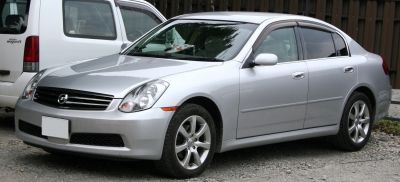
| Production: | 2001-2006 |
|---|---|
| Model Year: | 2001 |
| Length: | 4675-4765 mm184.1-187.6 in |
| Width: | 1750 mm68.9 in |
| Height: | 1470 mm57.9 in |

| Production: | 1981-1985 |
|---|---|
| Model Year: | 1981 |
| Length: | 4635 mm182.5 in |
| Width: | 1690 mm66.5 in |
| Height: | 1400 mm55.1 in |
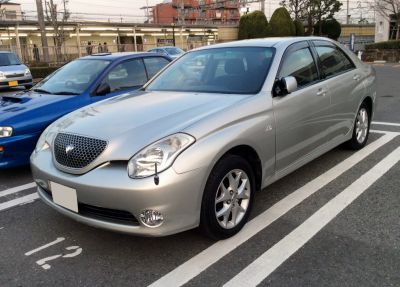
| Production: | 2001-2004 |
|---|---|
| Model Year: | 2001 |
| Length: | 4705-4775 mm185.2-188.0 in |
| Width: | 1760 mm69.3 in |
| Height: | 1450 mm57.1 in |
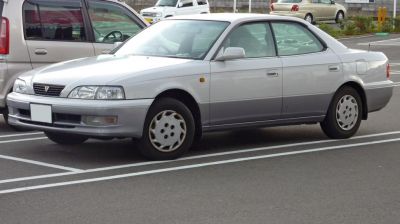
| Production: | 1994-1998 |
|---|---|
| Model Year: | 1994 |
| Length: | 4625-4640 mm182.1-182.7 in |
| Width: | 1695 mm66.7 in |
| Height: | 1395-1410 mm54.9-55.5 in |
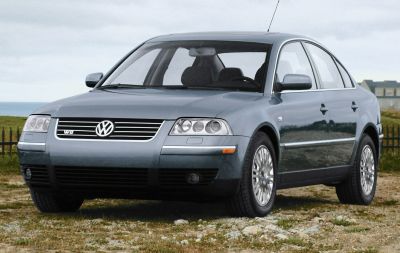
| Production: | 2000-2005 |
|---|---|
| Model Year: | 2000 |
| Length: | 4704 mm185.2 in |
| Width: | 1746 mm68.7 in |
| Height: | 1463 mm57.6 in |
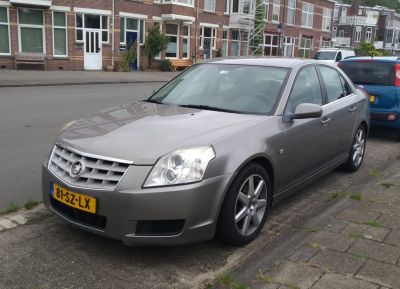
| Production: | 2006-2010 |
|---|---|
| Model Year: | 2006 |
| Length: | 4680 mm184.3 in |
| Width: | 2038 mm80.2 in |
| Height: | 1471 mm57.9 in |
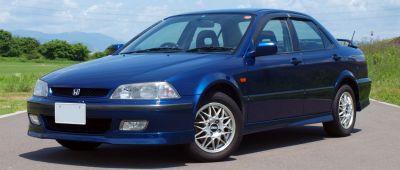
| Production: | 1997-2002 |
|---|---|
| Model Year: | 1997 |
| Length: | 4635-4680 mm182.5-184.3 in |
| Width: | 1695-1720 mm66.7-67.7 in |
| Height: | 1405-1420 mm55.3-55.9 in |
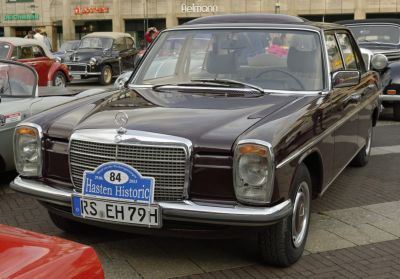
| Model Year: | 1973 |
|---|---|
| Length: | 4680 mm184.3 in |
| Width: | 1770 mm69.7 in |
| Height: | 1440 mm56.7 in |
